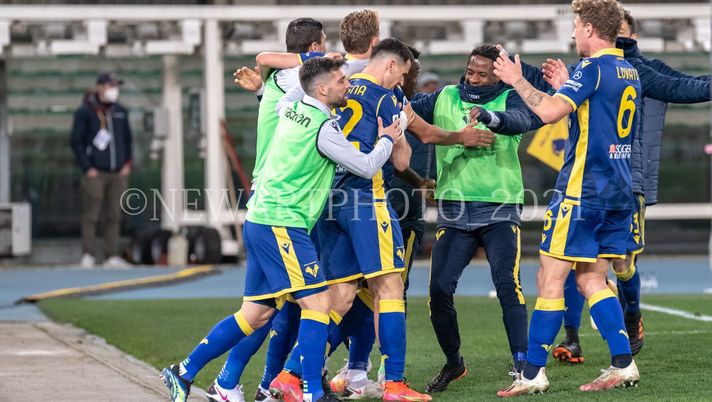The column of the week from Richard Hough for all the Verona-lovers speaking english.
gazzanet
Present and future, the Verona Project
The ideas for Hellas: today and tomorrow, this is way
Last weekend the Gazzetta dello Sport ran a sixteen page supplement full of news, views and analysis from Verona. In case you missed it, here are a few of the Gazzetta’s hot takes.
First up, Pierfrancesco Archetti identified the various pieces of the jigsaw that Juric has assembled to make Hellas one of the surprise stars of the championship. From Amrabat to “Kumbu”, Lovato to Zaccagni, Archetti examines how Juric constructed his squad piece by piece, identifying tactical identity, squad development and an aggressive mentality as the hallmarks of a team that continues to astound.
Archetti explains that Hellas have a strong tactical and strategical identity, which Juric directs with shouts of encouragement throughout the match. Under Juric’s command, it’s impossible for players to switch off, even for a moment. According to Archetti, “At Hellas Amrabat seemed to have a hundred lungs, two hundred legs and three hundred eyes to see, anticipate, recover, and run towards the other goal.” He recalls that when asked if Amrabat would be rested, Juric famously replied that he would “play until he dies”, a response that encapsulated the Moroccan’s impact at Verona last season, where he found a coach who played him in his ideal role.
As the Gazzetta notes, the list of young players who have progressed under Juric is striking – from Amrabat, Kumbulla and Pessina, to Zaccagni, Lovato and Ilic. Even more established players like Barak, Veloso, Faraoni, DiMarco and Lazovic, have been given new life by the Croatian technician. In fact, the only thing missing from Verona’s squad since Juric arrived in 2019 has been a consistent goal scorer. Barak and Zaccagni are the top goal scorers this season, with five goals apiece.
In Kevin Lasagna, Juric seems to have at last found that missing link. Speaking to the Gazzetta dello Sport last weekend, Lasagna described Verona as “in his destiny.” The striker spent four years with the Chievo youth team, but that ended in tears as he festered on the bench. At Udinese he scored 30 goals in 118 appearances, the kind of form that has earned him seven caps for the national team. You certainly can’t fault his work rate, but with just one goal from seven appearances, he will be hoping to be more decisive as the season reaches its final phase.
As for the future, the Gazzetta identifies some promising signs. Matteo Fontana explains that in recent seasons the depth of the squad has been greatly enhanced. At the end of last season, the Hellas first team had just fourteen players on their books. That number has now increased to twenty-three. Even so, at just €24 million, Verona has the third lowest wage bill in Serie A. Juve, who Hellas have drawn with twice this season, spend nearly ten times as much as Hellas (€236m), while only Crotone (€23m) and Spezia (€22m) spend less.
With the sale of Rrahmani, Amrabat and Kumbulla, Hellas have certainly cashed in, but there are at least some signs that the club is reinvesting in the squad. For Barak, Magnani and Ceccherini, Hellas have the right to buy in June. Recent deals have secured Lasagna, Gunter and Tameze, while contract extensions have also been agreed with ‘veterans’ Silvestri, Veloso and Faraoni. Hellas also have options with Dimarco, Ilic and Kalinic, while Ivor Pandur (20 year-old Croatian goalkeeper), Kevin Ruegg (22 year-old Swiss right-back) and Bruno Amione (19 year-old Argentine defender) represent the next generation of imported talent. There is also plenty of home-grown talent too, in the shape of Destiny Udogie and Philip Yeboah, both of whom have come up through the Hellas academy system.
So, as Hellas prepare to face Sassuolo on tomorrow afternoon, plenty to be positive about.
© RIPRODUZIONE RISERVATA

